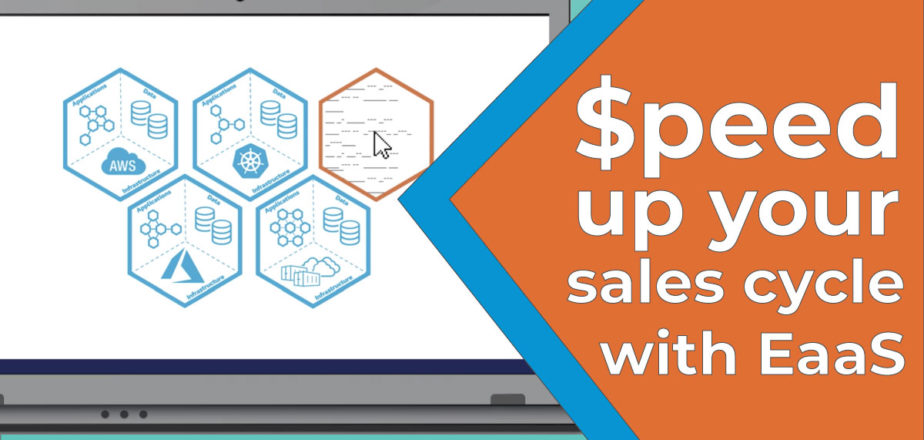Despite having a website with heavy traffic, compelling content, and consultative sales approaches, sales cycle times for enterprise software and hardware often last 6 months, 9 months, or even more than a year in too many cases. Shortening sales cycle times for complex IT products is a dream for nearly every VP of Sales and CFO who pour over Salesforce.com week after week, asking about the same opportunities that aren’t advancing. While there are certainly people and process adjustments that sales teams can make, there’s also a technology accelerator for sales cycle times.
3 Ways to Accelerate Your Sales Cycle with Environment as a Service
Ditch the Slides and Get Real
Some companies can still sell complex, enterprise IT software and equipment on the strength of their PowerPoint deck. That’s impressive, rare, and unsustainable. Many more companies are relying on ‘demos’ that involve clickable mockups with appealing UIs created using tools like InDesign. While that is a big improvement over slideware, prospects will remain prospects—never graduating to customer status—unless they increase that comfort level that your product will actually work in their complex environment.
Reference architectures are only a starting point. IT teams seem to know that their IT environment is different. Really different. Maybe even unusual. The point is that they cannot trust that your techie hardware or software will work as advertised in their real-world production environment. That’s why creating a cloud-based replica of your prospect’s environment is critical to closing sales quicker.
In our experience, the ability to replicate your customer’s real environment can cut your sales cycle time by about 22%, from 6 months down to 5 months for instance.
Simplify Your Provisioning Process
At a previous employer, my head of sales engineering would cringe upon learning about a new demo request that came in from our website. While our VP of Sales was celebrating a new addition to the pipeline, our sales engineering leader knew the consequences.
Sales Engineering: “Do you know what their environment looks like, so that I can show them a meaningful demo?”
Marketing: “Yes! We asked all the qualifying questions and learned all about their application, databases, middleware, ITSM, continuous integration tool, version control system, cloud platform…and…and…and…all the way down to the version numbers.”
Sales Engineering: “Cool! When exactly did you agree to this demo?”
Marketing: “Thursday”
Sales Engineering: “Thursday!? Ugh. Do you have any idea how long it will take me to set up this environment? First, I have to spin-up a bunch VMs, and before that I have to get the VMs approved…and then I’ll have to…and next I’ll have to…”
At this point I felt a wave of emotions ranging between “not my problem” and “I don’t understand”. My sales engineer was indeed happy to get a highly qualified lead and happy to show off our product, but dreading the late-night hours, hassles, and costs involved in replicating a customer’s environment. The problem was compounded if she had to quickly tear-down her sales demo environment in order to quickly set up a new environment for a new sales demo shortly thereafter. And what really frustrated her was if she needed to show a previous demo to someone who could not attend the first demo.
The reality is, most organizations using traditional provisioning processes spend up to a week setting up an environment. This will not scale as the technology supporting these environments gets more complex and the sales pipeline expands; leading to burnout, mistakes, and lost deals.
Simplifying your provisioning process to help your sales engineers quickly spin-up complex sales environments will accelerate your sales cycles.
Adopt an Environment as a Service Solution
Realistic environments are essential for successful sales demos. And manually creating them is hard. The solution is not for sales engineers to work longer hours though. Sales engineers for complex IT hardware and software need the ability to spin-up self-service environments on-demand using an Environment as a Service solution, like CloudShell Pro.
Instead of sales engineers constantly performing late-night heroics to get the demo environment set up on time, they can simply access a reusable blueprint library of pre-approved demo environments at the push of a button. Beyond cutting demo set up time up to 80%, sales teams can also use EaaS to standardize their sales demos and even eliminate the infrastructure sprawl and chaos that is so common in the lead up to the demo. And fortunately, sales teams have new choices and can avoid cloud lock-in by hosting their environments remotely in Azure or AWS or even on-prem.
Incorporating Environment as a Service helps sales teams differentiate themselves from their competition and shorten their sales cycle times.
Happy Selling!




